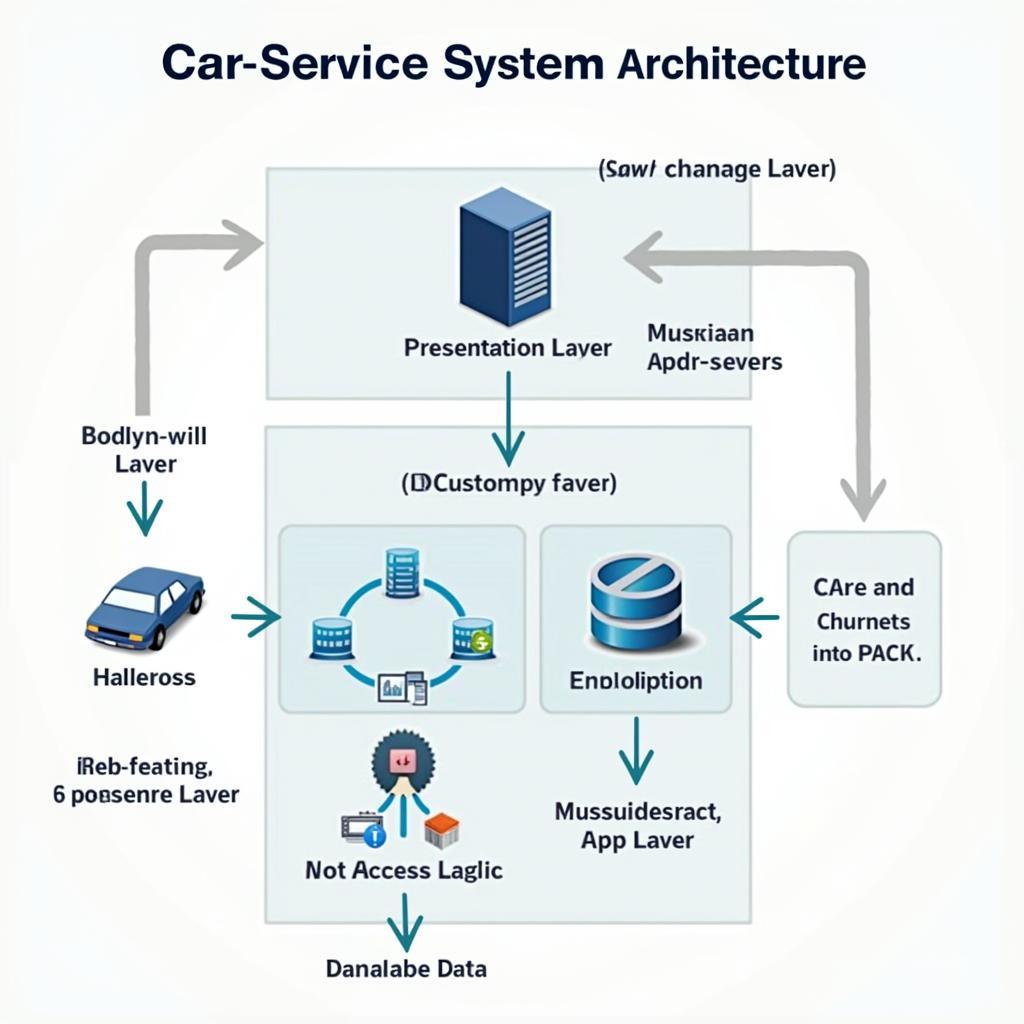UML deployment diagrams provide a visual representation of how software and hardware components interact within a car service system. They offer a crucial blueprint for understanding the physical architecture and dependencies within a modern car service operation, from online booking platforms to diagnostic tools. These diagrams are essential for designing, deploying, and maintaining efficient and reliable car service systems.
Understanding the Importance of UML Deployment Diagrams in Car Service
UML deployment diagrams are invaluable for car service businesses for several reasons. They clarify the relationships between different system components, facilitating better communication among developers, technicians, and stakeholders. This visual clarity streamlines troubleshooting and maintenance by pinpointing the location of hardware and software elements. Furthermore, these diagrams are vital for planning system upgrades and expansions, ensuring compatibility and minimizing disruption. They also contribute significantly to optimizing resource allocation, leading to cost savings and improved efficiency.
Key Components of a Car Service UML Deployment Diagram
A typical UML deployment diagram for a car service includes several key elements:
- Nodes: These represent physical or virtual machines, servers, or devices. Examples include the diagnostic computer, the customer database server, and the payment gateway server.
- Artifacts: These are deployable units of software, such as executable files, libraries, and configuration files. Examples within a car service context include the diagnostic software, the booking application, and the customer management system.
- Communication Paths: These lines illustrate the connections between nodes, representing the flow of information and data. Examples include the network connection between the diagnostic computer and the database server or the communication link between the booking application and the payment gateway.
Building a UML Deployment Diagram for Your Car Service
Creating a UML deployment diagram involves several steps:
- Identify System Components: List all hardware and software components involved in your car service operation.
- Define Relationships: Determine how these components interact with each other. Which nodes communicate with which others? What artifacts are deployed on each node?
- Choose a Modeling Tool: Select a suitable UML modeling tool to create the diagram.
- Draw the Diagram: Use the tool to represent the nodes, artifacts, and communication paths visually.
Benefits of Using UML Deployment Diagrams
UML deployment diagrams offer numerous advantages for car service businesses:
- Improved Communication: They provide a shared understanding of the system architecture among stakeholders.
- Simplified Troubleshooting: They facilitate faster identification and resolution of technical issues.
- Efficient System Upgrades: They help plan and execute system upgrades and expansions smoothly.
- Optimized Resource Allocation: They enable better management of resources, leading to cost savings.
Practical Applications of Deployment Diagrams in Car Service
Deployment diagrams can be applied in various scenarios within a car service, such as:
- Integrating new diagnostic tools: Visualizing the integration process helps ensure compatibility and minimize disruptions.
- Implementing a new online booking system: The diagram clarifies the interaction between the booking platform, the customer database, and other related systems.
- Scaling the IT infrastructure: Planning for expansion becomes more manageable with a clear overview of the existing architecture.
“In today’s interconnected world, a well-defined system architecture is crucial for any car service business. UML deployment diagrams provide the necessary blueprint for success.” – John Smith, Senior Automotive Systems Architect
FAQ: UML Deployment Diagrams for Car Service
-
What is the difference between a deployment diagram and a component diagram? A deployment diagram focuses on the physical deployment of software components onto hardware nodes, while a component diagram illustrates the logical relationships between software components.
-
What are some common tools for creating UML deployment diagrams? Popular tools include Enterprise Architect, Visual Paradigm, and Lucidchart.
-
How often should deployment diagrams be updated? Diagrams should be updated whenever significant changes are made to the system architecture.
“Deployment diagrams are not just for developers; they are a valuable tool for anyone involved in managing and maintaining a car service system.” – Jane Doe, Lead Car Service Technician
Conclusion
UML deployment diagrams are a powerful tool for visualizing and managing the complex architecture of a modern car service system. By understanding and utilizing these diagrams, car service businesses can improve communication, streamline operations, and optimize resource allocation. Implementing these diagrams contributes significantly to the efficiency, reliability, and scalability of your car service operation. Using a UML deployment diagram is a proactive approach to ensuring your car service stays ahead of the curve.
For any assistance, please contact us via WhatsApp: +1(641)206-8880, or Email: [email protected]. Our customer service team is available 24/7.


